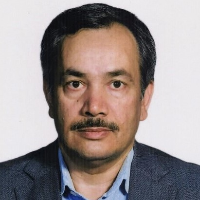Quantitative modeling of nitrate distribution in the Ardabil Plain aquifer using fuzzy logic
Author(s):
Abstract:
Introduction
The Ardabil plain aquifer, with area about 900 km2, has high concentration amounts of nitrate in some parts. Nowadays, nitrate pollution in groundwater due to the widespread application of fertilizers and increasing of drinking water demand, has encountered consumers with problem. The adverse health effects of high nitrate levels in drinking water have been well documented. In the last two decades use of fuzzy logic has considered to simulate of environmental process because of complexity in modeling domain and uncertainty in data. Most of these research studies has profited from advantages of fuzzy logic beside other scientific methods. In previous published academic researches which investigated vulnerability of aquifer by fuzzy logic, it has been concluded that data clustering and determination of bounds between these clusters is a matter of importance and the efficiency of fuzzy logic is higher than traditional methods. Reviewing the previous records indicates that there is not any literature about modeling of nitrate in Ardabil plain. So in this study distribution of nitrate in Ardabil plain aquifer has been estimated using fuzzy logic modeling and the performance of this method has been compared with kriging. Material And Methods
The study area is located between latitude 38°00′ and 38°30′ and longitude 48°00′ and 48°40′ and it covers an area of approximately 900 km2. In order to spatial distribution modeling of nitrate concentration in Ardabil plain, a total of 61 wells were sampled for chemical analyses on November, 2011. In this study 75% and 25% of samples were used for calibration and verification, respectively. Fuzzy logic: Contrary to classic sets, that their members are completely belong to them, in fuzzy sets the members have membership grades between 0 and 1. One of the applications of fuzzy theory is modeling. In order to modeling by fuzzy logic, first input data are shown as fuzzy membership functions, then these membership functions are related to output data via definition of fuzzy rules. Sugeno model is used in process of this kind of modeling which consists of three stages: 1- clustering, 2- identification of rules and 3- parameter estimation. To determine the optimum number of clusters, the software of FuzME has been applied. After the determination of classes, inputs of model were related to the outputs by definition of the if-then fuzzy rules. In the last step, least square errors were minimized to calibrate model. Kriging: Kriging is a geostatistics interpolation method which is an efficient linear unbiased estimator. After the examination of normality of data and using normalization for data without normal distribution, the best experimental and theoretical variogram basis isotropic or anisotropic properties of data plotted by GS+ software. As a result the best chosen variogram was exponential with nugget effect of 0.09 and sill about 0.50. Discussion of Results & Conclusions
In this study longitude and latitude have considered as inputs and nitrate concentrations have kept for output of model. For the reason that the UTM amounts were large numbers, in the beginning the inputs normalized between 0 and 1 then they were classified in six clusters by fuzzy c-mean clustering method. Since the number of rules in this type of modeling is equal to the clusters, therefore the set of inputs was related to the set of outputs via defining six rules and the parameters of model were estimated by the running of the model. The calibrated parameters of input and output membership functions are given in table (1).Keywords:
Language:
Persian
Published:
Journal of Environmental Studies, Volume:41 Issue: 1, 2015
Pages:
67 to 79
magiran.com/p1415216
دانلود و مطالعه متن این مقاله با یکی از روشهای زیر امکان پذیر است:
اشتراک شخصی
با عضویت و پرداخت آنلاین حق اشتراک یکساله به مبلغ 1,390,000ريال میتوانید 70 عنوان مطلب دانلود کنید!
اشتراک سازمانی
به کتابخانه دانشگاه یا محل کار خود پیشنهاد کنید تا اشتراک سازمانی این پایگاه را برای دسترسی نامحدود همه کاربران به متن مطالب تهیه نمایند!
توجه!
- حق عضویت دریافتی صرف حمایت از نشریات عضو و نگهداری، تکمیل و توسعه مگیران میشود.
- پرداخت حق اشتراک و دانلود مقالات اجازه بازنشر آن در سایر رسانههای چاپی و دیجیتال را به کاربر نمیدهد.
In order to view content subscription is required
Personal subscription
Subscribe magiran.com for 70 € euros via PayPal and download 70 articles during a year.
Organization subscription
Please contact us to subscribe your university or library for unlimited access!



